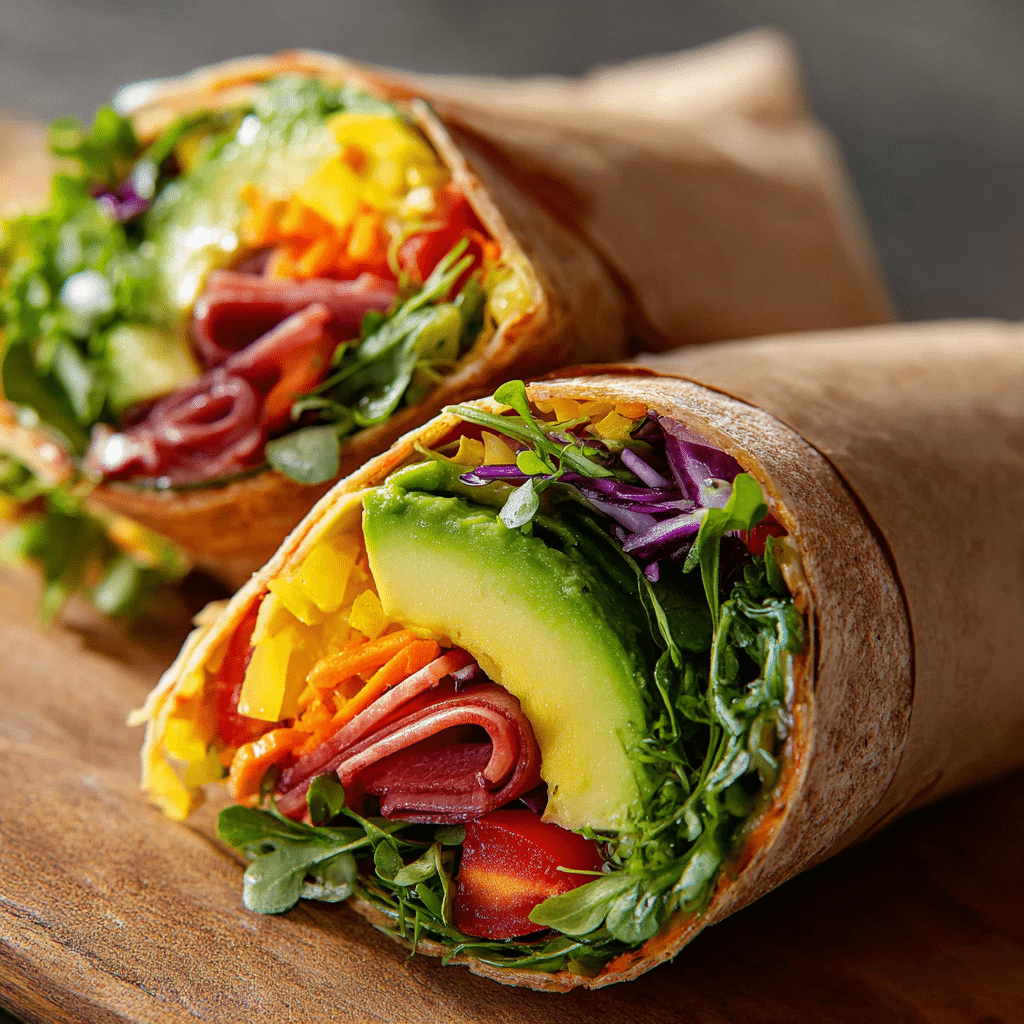Introduction: Lunch Meat Recall and Safe Alternatives
When it comes to food recalls, few things are as concerning as discovering that the lunch meat you’ve been using might not be safe. Whether it’s due to contamination or other safety issues, a lunch meat recall can throw a wrench into your meal planning and cause stress. However, there’s no need to panic. This article will guide you through what to do if you find yourself with recalled lunch meat at home, provide safe alternatives to consider during a recall, and give you creative and easy recipe ideas that’ll help you keep your meals tasty and safe. Let’s dive into everything you need to know!

Understanding Lunch Meat Recalls
Lunch meat recalls happen when manufacturers discover potential health risks associated with their products, such as contamination with pathogens, spoilage, or incorrect labeling. These recalls are often triggered by food safety inspections, consumer complaints, or lab testing results that reveal harmful substances in the product.
Table of Contents
Table of Contents
What Causes a Lunch Meat Recall?
Lunch meat is especially vulnerable to contamination because it’s often produced and packaged in bulk. The risk of contamination by bacteria like Listeria, Salmonella, or E. coli can occur during any stage of processing, from slaughtering the animal to the packaging process. A small issue at any of these steps could lead to contamination, which is why manufacturers, public health agencies, and the USDA quickly issue recalls when problems are detected.
Other factors that could trigger a lunch meat recall include:
- Mislabeling: If a product is labeled as free from certain allergens or preservatives but contains them, a recall may be necessary.
- Improper Storage: If lunch meats aren’t kept at the correct temperatures during transportation or storage, they can spoil or become unsafe to eat.
- Unapproved Ingredients: Sometimes, products may contain ingredients not approved for sale or that pose health risks.
How to Check if Your Lunch Meat is Affected by the Recall
If you’re unsure whether your lunch meat is part of a recall, you can follow these steps:
- Check the Product Label: Look for the establishment number (often starting with “EST” followed by a number), which is required by the USDA. This will help identify the producer.
- Review the Recall Notice: Visit the FDA or USDA websites to search for current recall announcements. You can find detailed information about affected products, including batch numbers, UPC codes, and expiration dates.
- Contact the Manufacturer: If you’re still unsure, call the customer service number on the packaging to inquire whether your specific product is part of the recall.
- Use the USDA Food Safety App: Download this free app to easily check for any food recalls, including lunch meats, based on product names and codes.
By staying informed about recalls and acting swiftly, you can ensure that your family stays safe while continuing to enjoy your meals.
What to Do If You Have Recalled Lunch Meat at Home
If you’ve discovered that the lunch meat in your refrigerator is part of a recall, it’s important to act quickly and follow proper procedures to protect your health and safety. Here’s a step-by-step guide on what you should do if you have recalled lunch meat at home.
Step-by-Step Guide for Disposing of Recalled Lunch Meat

Check the Recall Details: First, verify if the lunch meat is part of the recall. Look up the product details on the USDA or FDA website and match the product batch numbers, expiration date, and the brand of lunch meat with the recalled items.
Do Not Consume the Product: If the lunch meat is affected, do not consume it, even if it looks or smells okay. Harmful bacteria like Listeria or Salmonella can’t always be detected by sight or smell, so it’s important to avoid eating the recalled item altogether.
Dispose of the Product Safely: After confirming that the product is indeed part of the recall, safely dispose of it in your trash. To prevent animals from getting into the recalled meat, consider double-bagging it. You might also want to clean and disinfect your fridge, where the product was stored, to remove any potential contamination.
Keep the Packaging: If possible, keep the packaging with the batch number or UPC code. This may help you if you need to get a refund or replacement, as well as for verification purposes when contacting the manufacturer.
Contact the Manufacturer for a Refund or Replacement: Many companies offer refunds or replacements for recalled products. Reach out to the manufacturer or check their website for specific instructions on how to process a return. Some manufacturers may provide a refund or exchange, while others may offer a voucher or gift card for future purchases.
Check for Symptoms: If you’ve consumed recalled lunch meat and feel unwell, immediately seek medical advice. Symptoms of foodborne illnesses like Listeria or Salmonella can range from stomach cramps, nausea, vomiting, diarrhea, and fever. It’s important to stay vigilant if you’ve consumed potentially harmful food.
How to Seek a Refund or Replacement for Recalled Products
To receive a refund or replacement for the recalled lunch meat, follow these steps:
- Visit the Manufacturer’s Website: Many companies post detailed instructions on their websites on how to return affected products. Some may ask for the receipt, the batch number, or a photo of the product to confirm the recall.
- Call the Customer Service Line: If you don’t have internet access or prefer to speak to someone directly, call the company’s customer service number. They will provide you with a straightforward process for receiving your refund or replacement.
- Submit a Refund Claim: You may need to submit a claim form with proof of purchase (if available). Depending on the manufacturer, you might receive a refund, replacement product, or a voucher for future purchases.
Safe Alternatives to Lunch Meat During a Recall
When a lunch meat recall occurs, it’s important to have alternatives on hand. Many delicious and safe options can replace processed meats, ensuring you and your family stay healthy and satisfied.
Plant-Based Options for Lunch Meat Substitutes
One of the best substitutes during a lunch meat recall is plant-based deli slices. These alternatives are not only safe but often free from preservatives. Here are some popular options:
- Tofurky Slices: A vegan option made with tofu.
- Tempeh Slices: Made from fermented soybeans.
- Seitan: A savory wheat-based option perfect for sandwiches.
These plant-based options offer a similar texture and taste to traditional lunch meat, making them ideal during a lunch meat recall.
Homemade Deli Meat Ideas
You can also make your own deli meats at home, which ensures the safety of your meals:
- Roast Chicken or Turkey: Simply roast a bird and slice it for sandwiches.
- Slow-Cooked Beef or Pork: Tender and flavorful, perfect for salads or wraps.
- Vegetable-Based “Meats”: Roasted veggies like mushrooms and eggplant can replace deli meat in sandwiches and wraps.
Homemade options give you control over the ingredients, making them a safe and tasty alternative during a lunch meat recall.
Benefits of Homemade and Plant-Based Lunch Meats
Opting for plant-based or homemade lunch meat alternatives during a lunch meat recall allows you to:
- Control ingredients and avoid preservatives.
- Customize flavors to suit your taste.
- Choose more environmentally-friendly options.
These alternatives ensure that you can still enjoy healthy, satisfying meals even during a lunch meat recall.
Can You Still Use Lunch Meat for Recipes if It’s Not Part of the Recall?
If your lunch meat is not part of the recall, you may be wondering if it’s still safe to use for your recipes. It’s essential to confirm that the lunch meat is safe before using it, even if it’s not part of a recall.
How to Verify the Safety of Your Lunch Meat
- Check Expiration Dates: Always check the expiration date on the packaging. If it’s past the date, it’s better to discard the lunch meat, even if it’s not part of the recall.
- Inspect for Signs of Spoilage: Look for any unusual color, texture, or odor. Spoiled lunch meat can cause foodborne illnesses, so it’s important to discard any meat that appears off.
- Proper Storage: Ensure that your lunch meat has been stored at the correct temperature. Lunch meat should always be kept refrigerated at 40°F (4°C) or lower. If it has been left out at room temperature for over two hours, discard it.
- Smell and Texture Check: If the lunch meat smells sour or slimy, it’s likely spoiled. Even if the product isn’t part of a lunch meat recall, these signs indicate it should not be used.
Top Tips for Ensuring Your Lunch Meat Is Safe to Use
- Keep Your Fridge Clean: Make sure your fridge is clean and at the correct temperature to help maintain the safety of your lunch meat.
- Seal the Packaging Properly: After opening, re-seal the lunch meat tightly in its original packaging or an airtight container to prevent contamination.
By following these tips, you can confidently decide whether your lunch meat is safe to use for your recipes, even if it’s not part of a lunch meat recall.
Quick and Easy Recipes Using Lunch Meat Alternatives
During a lunch meat recall, it’s crucial to have some quick and easy alternatives ready to go. Luckily, there are plenty of delicious and simple recipes you can whip up using plant-based or homemade substitutes. Let’s explore some options that will keep you satisfied without sacrificing flavor or convenience.
Avocado & Veggie Wraps with Plant-Based Deli Slices
One of the easiest and healthiest recipes is an avocado and veggie wrap using plant-based deli slices. Simply grab a whole wheat wrap and layer it with:
- Plant-based deli slices (such as Tofurky or tempeh).
- Fresh avocado.
- Sliced cucumber, tomato, and leafy greens.
- A drizzle of olive oil and your favorite herbs.
This wrap is quick, delicious, and packed with nutrients, making it a perfect meal when you’re avoiding lunch meat due to a recall.
Grilled Chicken and Veggie Skewers as a Healthy Lunch Option
For those who prefer a protein-packed meal, grilled chicken and veggie skewers are a fantastic lunch meat alternative. Here’s a simple recipe:
- Chicken breast (cubed).
- Bell peppers, onions, zucchini, and mushrooms (cut into chunks).
- Olive oil, garlic, and lemon juice for marinating.
Grill the skewers until they’re perfectly cooked, and serve them over a bed of quinoa or brown rice. These skewers are not only tasty but also a great way to incorporate more veggies into your diet during a lunch meat recall.
Chickpea Salad Sandwich
Another easy alternative is a chickpea salad sandwich. This vegetarian option is perfect for a quick lunch:
- Mashed chickpeas.
- Vegan mayo and a touch of mustard.
- Chopped celery, onion, and dill pickles for crunch.
Spread the chickpea salad on whole-grain bread and enjoy a satisfying meal. This is an excellent lunch meat alternative that’s both filling and nutritious.
These recipes prove that you don’t need lunch meat to create a delicious, quick meal. With the right alternatives, you can still enjoy easy and healthy meals during a lunch meat recall.
Creative Recipes to Replace Traditional Lunch Meat

When a lunch meat recall affects your meals, it’s time to get creative. There are plenty of innovative, delicious, and healthy alternatives to traditional deli meats that you can incorporate into your meals. Whether you’re trying to avoid processed foods or just want something different, here are some tasty, lunch meat-free ideas.
Lentil and Tofu Sandwiches for a Meat-Free Option
Lentils and tofu make a great combination in sandwiches. This recipe is perfect for those looking to avoid lunch meat during a lunch meat recall but still want a filling, protein-packed meal:
- Cooked lentils.
- Crispy tofu slices.
- Lettuce, tomato, and a bit of mustard for flavor.
This hearty sandwich is rich in plant-based protein and makes for an excellent lunch option that’s easy to prepare and delicious.
Homemade Veggie Burger Patties Using Plant-Based Ingredients
Instead of using traditional lunch meats, try making homemade veggie burger patties. These burgers are filling and flavorful, and they’re a great option for those avoiding lunch meat:
- Black beans or chickpeas as the base.
- Oats, onions, and garlic for texture.
- Spices like cumin and paprika for flavor.
Form the mixture into patties and pan-fry or bake them until crispy. Serve them in a bun with your favorite toppings. This veggie burger is a perfect lunch meat replacement, especially during a lunch meat recall.
Roasted Cauliflower Wraps
For a lighter option, roasted cauliflower wraps can be an excellent substitute for lunch meat. The cauliflower provides a meaty texture, and when roasted with seasonings, it’s full of flavor:
- Roasted cauliflower florets seasoned with olive oil, garlic, and paprika.
- Wrap in a whole-wheat tortilla with hummus and fresh greens.
This healthy and flavorful wrap will keep you satisfied and is a great lunch meat alternative when you’re avoiding deli meats during a lunch meat recall.
These creative recipes prove that you don’t need traditional lunch meat to enjoy delicious, satisfying meals. You can get creative with plant-based ingredients and still make meals that are healthy and full of flavor.
Tips for Choosing Safe Lunch Meat in the Future
Even after a lunch meat recall, it’s essential to be mindful of what you buy for future meals. Understanding how to choose safer options can help you avoid contamination and make informed decisions when purchasing lunch meat. Here are some key tips to keep in mind.
Reading Labels and Understanding Food Safety Standards
The first step in choosing safe lunch meat is to carefully read the label. Look for products that are properly labeled with a USDA inspection mark, which indicates that the product has passed safety regulations.
When reviewing the label, consider:
- Ingredient List: Avoid products with long ingredient lists full of preservatives, artificial flavorings, or colorings. Choose lunch meats with fewer, simpler ingredients.
- Expiration Dates: Always check the “sell by” or “use by” date to ensure freshness. Meat products can spoil quickly, especially if not stored properly.
- Packaging: Look for tightly sealed, vacuum-packed options. This reduces the risk of contamination and ensures a longer shelf life.
How to Choose a Reputable Brand to Avoid Recalls
While some brands are more prone to recalls than others, many reputable brands take extra precautions in food safety. Here’s how to identify them:
- Look for Trustworthy Brands: Opt for well-known, trusted brands that prioritize quality and food safety. These brands often invest in better processes and safety measures.
- Check for Certifications: Some brands have third-party certifications, such as organic or free-range labeling, indicating that their meats are handled under stricter conditions.
- Stay Updated on Recalls: Even with reputable brands, recalls can still occur. Stay informed by regularly checking the USDA and FDA websites for the latest recall notices. Many manufacturers also offer recall alerts to customers, so sign up if possible.
Opt for Fresh, Unprocessed Meats
Whenever possible, choose fresh, unprocessed meats like turkey breasts, chicken breasts, or ham that can be sliced at home. These meats are less likely to be affected by a lunch meat recall and offer more control over your food’s preparation and safety.
Avoid Bulk Deli Meats When Possible
Buying bulk deli meats can be convenient, but they can also increase the risk of contamination. Pre-sliced meats tend to have a shorter shelf life and may be exposed to bacteria during the slicing process. If you must buy deli meats in bulk, make sure to store them properly and consume them quickly.
By following these tips, you can confidently choose safe lunch meats, ensuring your meals are delicious, nutritious, and risk-free.
FAQ Section
What should I do if I have recalled lunch meat at home?
If you have recalled lunch meat at home, immediately check the recall details from trusted sources like the FDA or USDA. Do not consume the product, even if it looks or smells fine. Safely dispose of it by double-bagging it to prevent contamination, and clean your refrigerator thoroughly. Most manufacturers offer refunds or replacements, so contact them for a possible return or exchange.
What are some safe alternatives to lunch meat during a recall?
During a lunch meat recall, you can opt for plant-based deli slices, homemade deli meats, or grilled chicken and vegetables as safe alternatives. Plant-based options such as Tofurky or tempeh are great substitutes. You can also make your own deli meat by roasting or slow-cooking chicken or turkey, giving you more control over the ingredients.
Can I still use lunch meat for recipes if it’s not part of the recall?
If your lunch meat is not part of the recall, you can still use it for recipes, but make sure it’s fresh and properly stored. Always check the expiration date, ensure the product was stored at the correct temperature, and inspect for any signs of spoilage. If it looks or smells off, discard it, even if it’s not part of a lunch meat recall.
What are some quick and easy recipes using lunch meat alternatives?
Some quick and easy recipes using lunch meat alternatives include:
Avocado & Veggie Wraps: Made with plant-based deli slices, avocado, and fresh veggies.
Grilled Chicken and Veggie Skewers: A protein-packed option using grilled chicken and seasonal vegetables.
Chickpea Salad Sandwiches: A great vegetarian option with mashed chickpeas, vegan mayo, and crunchy vegetables.
These alternatives are healthy and simple, perfect for avoiding lunch meat recalls while still enjoying delicious meals.
Conclusion: Staying Safe with Lunch Meat and Finding Delicious Alternatives
A lunch meat recall can be unsettling, especially when you rely on deli meats for quick meals. However, by staying informed, you can handle the situation safely and find tasty alternatives to keep your meals on track. Whether you choose plant-based deli slices, homemade lunch meats, or creative veggie-based dishes, there are plenty of safe and delicious options available.
Why It’s Important to Stay Informed About Recalls
When it comes to food safety, knowledge is your best ally. Keeping up to date with lunch meat recalls helps you avoid risks and ensures that the food you eat is safe. By regularly checking the USDA and FDA websites, as well as manufacturer recall notifications, you can take quick action if a recall affects your household.
Simple Tips for Enjoying Safe and Tasty Meals Without Lunch Meat
Even during a lunch meat recall, you can still enjoy easy, quick, and healthy meals. Whether you’re making homemade deli meat, opting for plant-based alternatives, or creating innovative veggie dishes, there are endless possibilities. By choosing fresh, safe ingredients and exploring new recipes, you can ensure that your meals remain both safe and satisfying.
In conclusion, while a lunch meat recall can be inconvenient, it’s also an opportunity to explore new and healthier options. From homemade alternatives to plant-based products, the choices are endless—and delicious.
